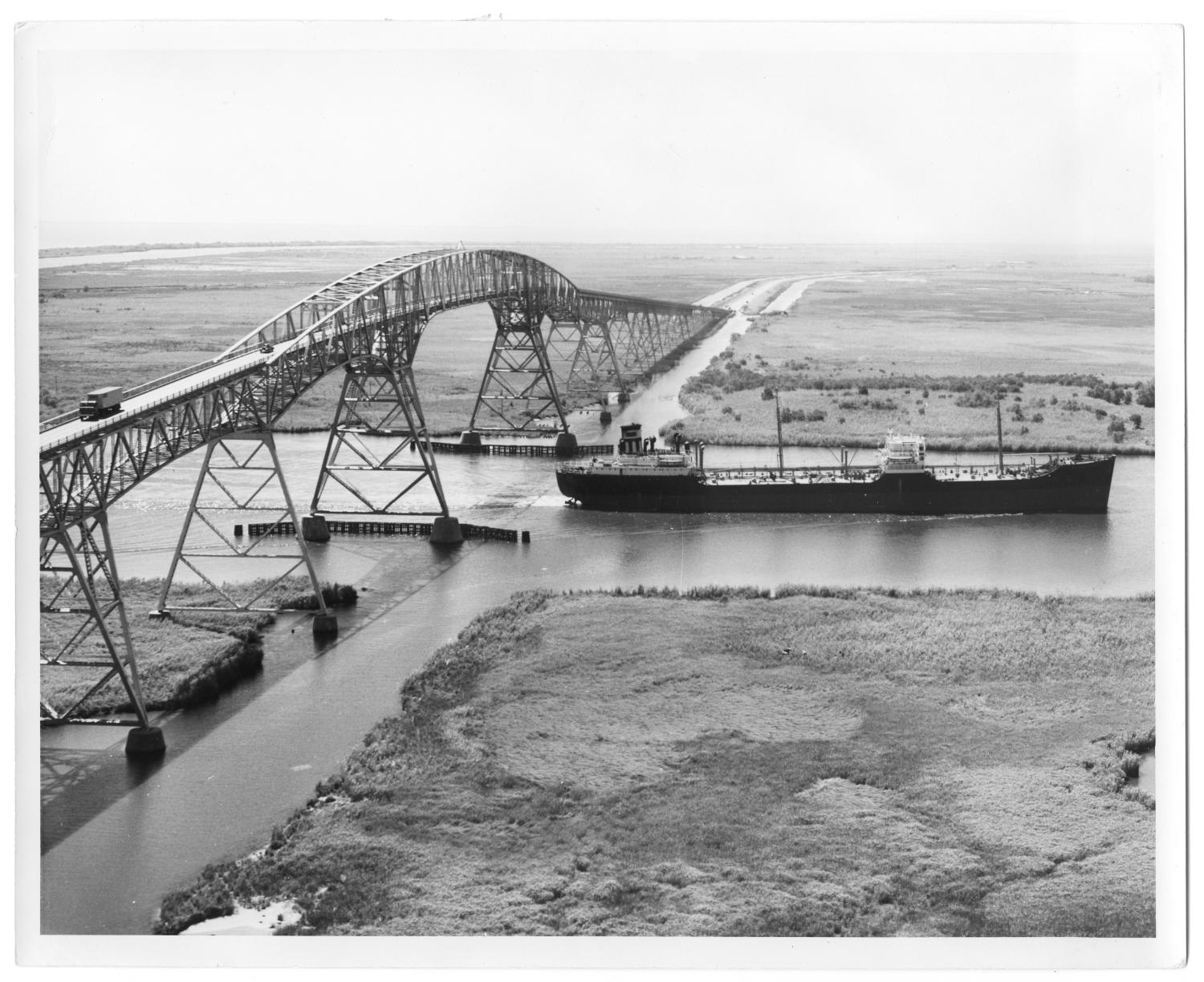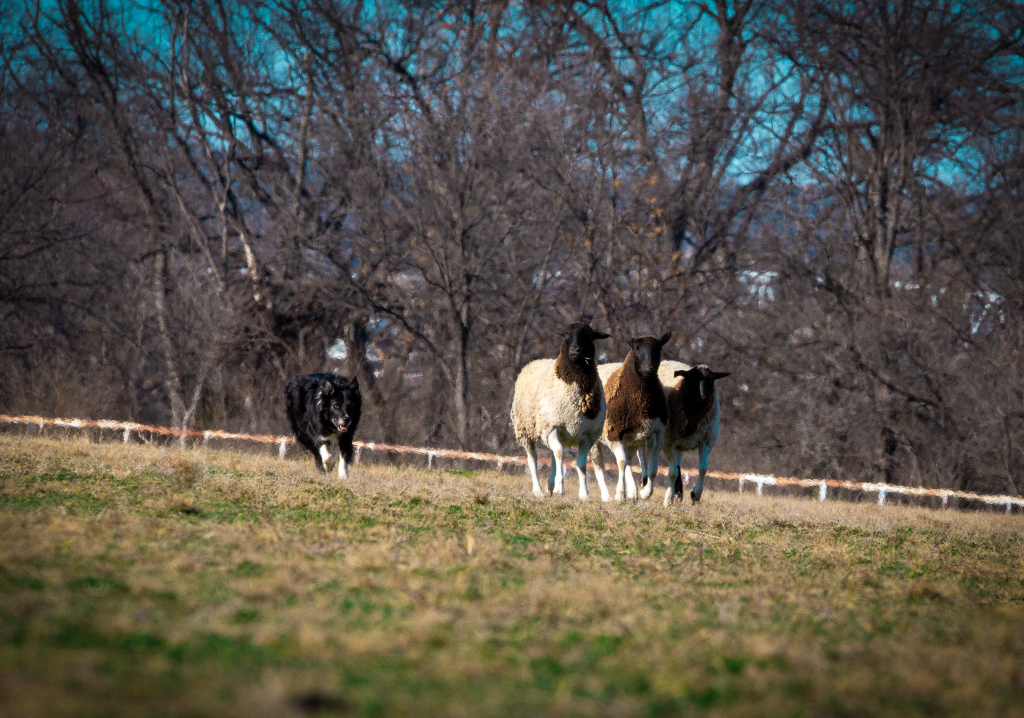
A 1954 picture of the Rainbow Bridge over the Neches River. Photo by J.C. Watkins. Courtesy Museum of the Gulf Coast via Portal to Texas History
I am looking at a picture of the Rainbow Bridge—and it gives me the creeps. The bridge is too high, the road rises at too sharp an angle. It looks ancient. Its lattice-like cantilever and through-truss gridwork bring to mind a vintage Erector Set. My vague childhood memories of building such toy skyscrapers and vehicles include how wobbly the finished products were.
And you want me to drive on that?
Welcome to my nightmare, or at least what once was.
“Gephyrophobia” is the term for fear of bridges, and I must have a mild case of it. Whenever I’m driving on elevated roads that cross over water or deep canyons, I avoid stealing glances off to the side or thinking too much about the lack of wiggle room for error. I can’t imagine a worse place to have mechanical problems than a bridge.
Once, while crossing the San Rafael-Richmond Interstate 580 bridge in northern California, my hands got sweaty and my vision narrowed. The low ceiling and gridwork of metal trusses flashing past made simple tasks seem like a big deal: Keep hands on wheel, ignore strobing gridwork, maintain speed, stay in lane. I got to the other side, no problem. It was all in my head.
Rainbow Bridge, the real thing, links Port Neches and Bridge City in southeast Texas, via State Highways 73 and 87. A Public Works Administration Project, the the mile-and-a-half span—originally known as the Port Arthur-Orange Bridge—took shape in 1936. Its height of 230 feet tall, including water clearance of 177 feet, was designed to be high enough above the Neches River to accommodate the big ships coming out of the Bethlehem Steel Beaumont Shipyard upriver. It remains the tallest bridge in Texas.
The bridge’s design was purely functional. But as time passed, appreciation grew for its Buck Rogers 1930s vintage sci-fi look. Its name was changed in 1957 after a public contest sponsored by the North Port Arthur Lions Club. According to an article in the Beaumont Enterprise, 6-year-old Christy McClintock won the prize of $50 in savings bonds. She said she chose the name because the bridge’s arch resembled a “mechanical rainbow.” The Rainbow Bridge was added to the list of National Register of Historic Places in 1994.
Truth is, driving the Rainbow isn’t as scary as the picture may suggest to anyone with the tiniest bit of gephyrophobia, as long as you stay in your lane, and your vehicle doesn’t quit. There’s hardly any shoulder.
That steep approach? It’s a 5 percent grade, a relative pittance compared to the 12% grade motorists must grapple with ascending The Big Hill westbound on Farm-to-Market Road 170, the River Road between Lajitas and Presidio in West Texas.
Rainbow Bridge was scarier the first time I rode over it in 1976 with my friend Leon Eagleson at the wheel of his El Camino truck. He was showing me around his hometown of Nederland and wanted me to see Sparkle Paradise. The poetically named dance shack was at the eastern foot of the bridge in Bridge City and hosted storied regional entertainers including Clifton Chenier, the Boogie Kings, and Cookie and the Cupcakes. Back then, the bridge was a tight two-way thoroughfare with one lane in each direction. Leon drove the bridge so smoothly and effortlessly, I didn’t have a chance to gin up any phobias. By the time we went back across the bridge, I thought I could drive it, no problem. And I eventually did.
Changes since then have diminished my fear factor of Rainbow Bridge.
In 1991, the Veterans Memorial Bridge opened 400 yards downstream from Rainbow Bridge, which was then closed for an extensive rehab before reopening in 1997 as a westbound only two-lane bridge. Veterans Memorial was the first, and remains the only cable-stayed suspension segmental concrete bridge built on a Texas highway. Its sleek design and signature towers were a marked contrast to Rainbow Bridge.
Since then, even taller power transmission towers constructed nearby have reduced the bridge to a less intimidating context, the same way 200-foot wind turbine towers dwarf water towers and county courthouses on the horizons of many small towns in Texas today.
These days, pondering that image of Rainbow Bridge for me is more like enjoying a bygone thrill ride such as the old Comet rollercoaster at the State Fair of Texas. Tame by modern standards, but for some of us, just scary enough.








